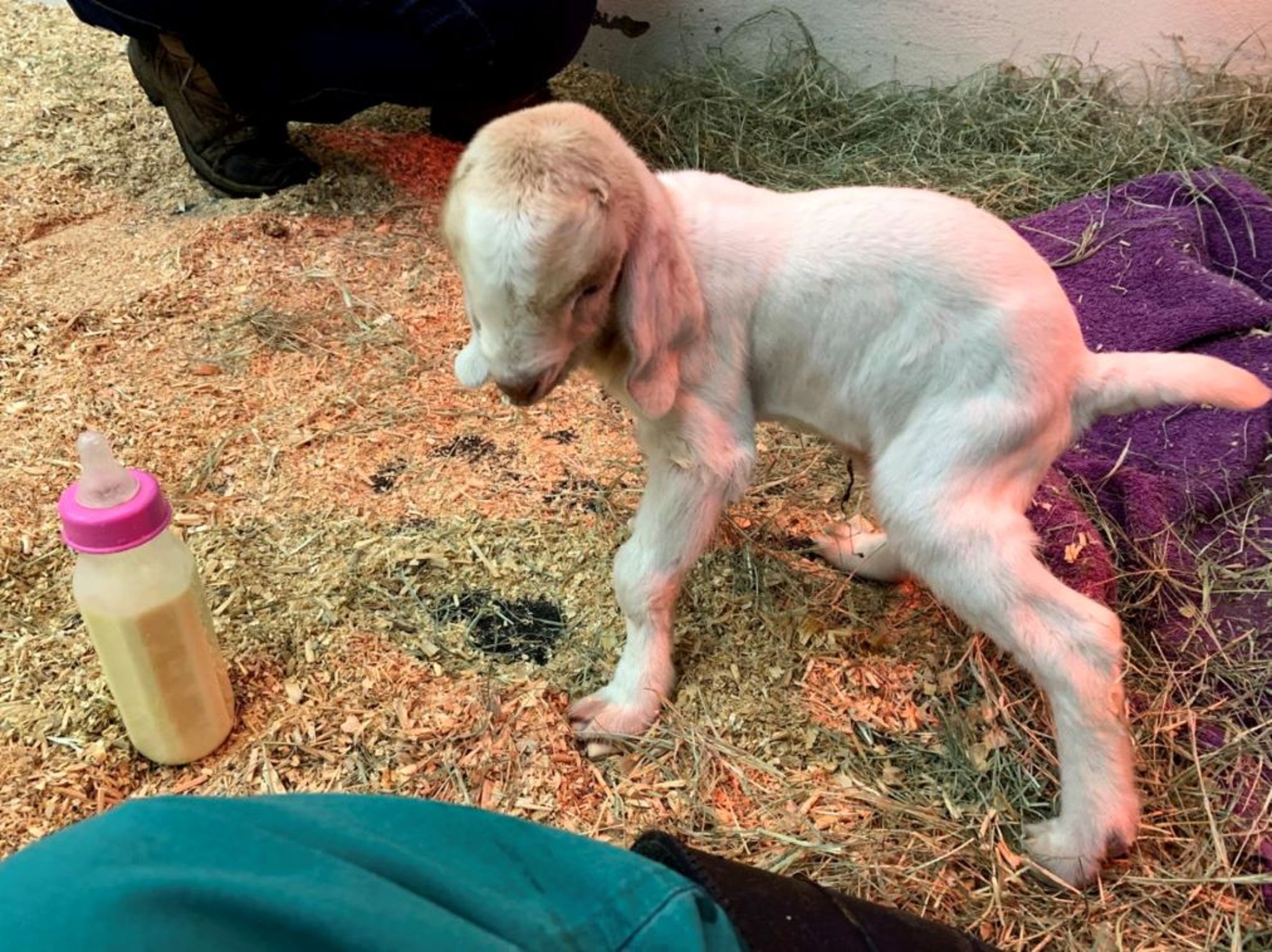Courtesy of Dr. Evelyn MacKay.
Contracted tendons in newborn kids occur sporadically in goats of all breeds throughout the world, usually with unexplained etiology. However, there are two specific inherited conditions of goats that result in contracted tendons of newborns.
A usually bilateral, congenital condition that is a genetic defect occurs in Angoras in Australasia. It is due to a recessive autosomal allele that must reach a certain level before affected animals appear; the time between purchase of a carrier buck and appearance of affected kids may be 5–6 generations. Either the forelimbs or hind limbs are affected. In rare cases, only one forelimb is twisted. In severe cases, the kid is either unable to stand or walks on its fetlocks. In less severe cases, the kid may move relatively easily with fetlocks that are permanently flexed. In mild cases, the limbs may gradually be splinted straighter until the kid is able to bear weight on its feet.
Anglo-Nubians in the US, Canada, Australia, and New Zealand can have a rare genetic condition called beta-mannosidosis. At birth, affected kids have varying degrees of fixed flexion of the forelimbs and fixed extension of the hind limbs. They can see, bleat, and suckle if held up to the teat. Their withdrawal reflexes are normal or depressed, and there is an intention tremor, especially of the head. There may be nystagmus, deafness, and facial abnormalities. At necropsy, cutting the tendons allows free movement of the limbs. Histologic examination reveals typical lesions of lysosomal storage disease characterized by cellular vacuolation. Affected kids have no plasma levels of beta-mannosidase, and both parents have levels half the normal range.




